There are two kinds of people: flossers and those who should be flossing. That’s because using floss is an important part of keeping your teeth and gums healthy, along with brushing with fluoride toothpaste.
“A toothbrush removes plaque, but it mainly targets the front and back of teeth,” says Dr. Amr Moursi, American Academy of Pediatric Dentistry past president and a professor at the NYU College of Dentistry. “Flossing removes plaque in between teeth and along the gum line that the toothbrush may not be able to reach.”
Plaque is a collection of stuff you don’t want sticking to your teeth including bacteria, food and other materials, according to Moursi. Plaque can potentially lead to issues like gingivitis (aka, early gum disease) and even bad breath. Flossing regularly and properly helps avoid these issues, according to Dr. Edmond Hewlett, professor at the UCLA School of Dentistry.
To get or keep you flossing, we talked to dentists about how to shop for floss — which comes in different flavors and varieties — and we got tips for using it correctly. We also rounded up floss options with the American Dental Association’s Seal of Acceptance based on the experts’ guidance.
SKIP AHEAD How we picked the best dental floss | The best dental floss | Why is it important to floss? | How to shop for floss | Why trust NBC Select?
How we picked the best dental floss
When shopping for a floss, our experts recommend considering the following:
- Type of floss: There are many different floss options available, including water flossers, traditional string dental floss, floss picks and more. The best floss depends on your teeth, your needs and what your dental care experts suggest. Our list includes dental floss that comes unwaxed and waxed as well as floss picks.
- ADA acceptance: Experts recommend choosing floss with the ADA Seal of Acceptance. “A company earns the ADA Seal for floss or other interdental cleaners by producing scientific evidence demonstrating the safety and efficacy of its product in reducing plaque and gingivitis,” according to the ADA. Our list has approved brands and flosses.
- Flavor: Traditionally, floss has either come “unflavored” or minty. In recent years more floss flavor options have become available. This list includes traditional options and alternatives, including strawberry, orange and more.
The best dental floss in 2024
Editor’s pick: Cocofloss Floss
This NBC Select Wellness Award winner uses recycled polyester, vegan wax and coconut oil to access hard-to-reach areas while also soothing gums, according to the brand. “I made a promise to myself after going to the dentist last year to try and floss consistently, and Cocofloss has helped with that process,” says NBC Select commerce editor Jordan Bowman. “It’s a bit thick so it can easily grab any plague or food scraps from in between my teeth.” This is because it has a textured weave of interwoven threads that expand to reach and remove plaque, according to the brand.
Best overall: Oral-B Glide Pro-Health Floss
All of our experts recommend this ADA-approved floss because of its effectiveness and ease of use. When flossing, it slides in between teeth while easily removing plaque, food and more. “My mom is a dental hygienist, so growing up, this has always been my go-to option,” says NBC Select associate reporter Bianca Alvarez. “I never have any issues using this floss because it’s so durable; I can get around my entire mouth without it shredding or fraying.”
Best for wide spaces: Reach Floss
This nylon, mint-flavored floss is great for those with more space between their teeth because it has an extra-wide cleaning surface, according to the brand. Its waxed coating also allows it to slide easily in hard-to-reach places to effectively remove more plaque, according to Reach.
Best flat floss: Tom’s of Maine Naturally Waxed Antiplaque Flat Floss
Using a combination of ingredients, including beeswax, carnauba wax and jojoba wax, Tom’s of Maine coats its nylon floss so you can quickly remove plaque and maneuver it between and around your teeth. Unlike other options on our list, this floss is flat, meaning that it is broader than thread floss allowing it to effectively remove all plaque for those with more space between their teeth, according to our experts.
Best floss pick: DenTek Triple Clean Floss Picks
DenTek Floss Picks have mouthwash-flavored, fluoride-infused floss strands. They come in packs of 75, 90 or 150. Other varieties of DenTek’s floss picks also received the ADA Seal, including Complete Clean, Fresh Clean and Comfort Clean Floss Picks.
Best refillable floss: Quip Refillable Floss String
“I throw Quip’s floss in my bag and bring it with me everywhere,” says NBC Select associate commerce editor Zoe Malin. “The floss is mint flavored, so it leaves my mouth tasting fresh, and it’s pre-marked, so I know exactly how much to use every time.” The floss is marked every 18 inches to show you where to tear off a piece, and it expands with use so you can tell which part of the string is fresh while flossing.
Best for kids: DenTek Kids Fun Flosser Floss Picks
These fruit-flavored, fluoride-coated packs of floss picks are designed to fit kid-sized teeth and hands, so they can easily floss on their own, according to the brand. “My younger siblings use these, and it’s a great way for them to create their own oral care habits independently,” says Alvarez.
Best pack: CVS Health Waxed Mint Dental Floss
CVS Health dental floss, including this mint-flavored option, has the ADA Seal. The floss will help remove plaque, prevent and reduce gingivitis and stimulate the gums as you work it between the teeth and below the gum line, according to the brand.
Best whitening floss: Reach Pop Whitening Dental Floss
Another favorite floss brand of Alvarez’ is Reach Pop, which makes this whitening dental floss. “I consume a lot of drinks that can stain my teeth, so I incorporate whitening products in my routine, including this floss,” she says. The Reach Pop floss is infused with baking soda to help whiten and prevent stains, while the interlaced wax-coated threads remove plaque between the teeth and the grooves, according to the brand.
Why is it important to floss?
“Floss removes plaque; that’s the bottom line,” says Moursi. Without regular care, plaque can build up; the longer it stays, the harder it is to remove. Eventually, plaque can turn into tartar, and tartar can only be removed through professional dental cleaning, according to the ADA — it can also lead to a host of issues, including gingivitis. Luckily, preventing plaque build-up is easy with regular brushing and flossing, according to our experts.
How to shop for dental floss
Dental floss is regarded as the gold standard for removing plaque between the teeth where a toothbrush can’t reach, according to Hewlett. Moursi also added that most flossing research studies have been conducted with dental floss, so there’s a lot of data showing its effectiveness. But floss is not one-size-fits-all, he noted. Since using dental floss is difficult for some, there are other effective tools like interdental cleaners. Below, we break down the differences among several different options.
Types of floss
Dental floss
When people think of dental floss, it’s usually the threaded variety that comes on a spool. But there’s also dental tape, which Hewlett describes as a broader and flatter type of floss. It’s particularly useful for people with larger spaces between their teeth since it covers more surface area, says Dr. Ramez Saba, a dentist at McLean Dentistry in northern Virginia.
Both forms of floss come in unflavored or flavored varieties, but choosing a flavored option has no impact on how well it cleans your teeth, according to Hewlett. Flosses also come waxed and unwaxed. Unwaxed floss, typically made from nylon, is very common for removing plaque and food particles, according to Saba. On the other hand, waxed floss is more sturdy, is more resistant to shredding and it’s easy to slide in between the teeth, especially in very tight spaces, Saba says.
Floss picks
Floss picks are similarly effective when compared to thread floss, according to our experts. The picks look like a wand and have a small piece of floss at the forked end, so you can grip the handle while using the tool. Floss picks are generally easy to use, especially when flossing a child’s teeth. This is also great for those with dexterity issues, like arthritis, or for those who have trouble wrapping string floss around their fingers and accessing those hard-to-reach areas, says Saba.
Water flossers
Water flossers are powered devices that shoot pressurized water at the spaces between teeth, targeting debris to disrupt and flush out plaque. For water flossers to be effective and gentle, you must hold them at the right spot and angle for a certain amount of time, according to Moursi.
Anyone can use water flossers, but they’re extremely beneficial for those who have difficulty using thread floss or floss threaders and those with certain dental work, such as braces, bridges and crowns.
Interdental brushes
Dental work like braces, bridges and crowns can block floss from slipping between teeth, making flossing challenging. Interdental brushes — which look like little spoolie brushes — can pass through the spaces between teeth and under any dental work, allowing you to remove plaque.
The brushes have bristles on one end and a handle to grip on the other. To use, you point the brush at the gum line between teeth and push it through, moving the bristles around the space to remove plaque, says Hewlett. The brushes come in various shapes and sizes to fit the spaces between your teeth.
Frequently asked questions
How often should you floss?
Experts recommended flossing — or using another plaque-removing tool — once to twice a day. What time of day you floss is not crucial, but experts suggest flossing before bed. “The last thing that should touch your teeth before you go to bed should be a toothbrush and floss,” Hewlett said.
When should you floss?
You can floss either before or after brushing your teeth, according to Moursi. This will mainly fall on personal preference, according to our experts. Flossing first and then brushing your teeth will allow the fluoride in your toothpaste to sit and come in contact with your teeth, which is especially good for those who are prone to cavities or who need extra support against tooth decay, says Saba. Regardless of what you choose, the most important thing to remember is flossing before going to bed.
Cleaning your teeth before bed has a couple of advantages. First, it allows you to remove any grime that builds up during the day. But also, when you’re sleeping, your salivary flow — the body’s natural anti-plaque agent — is at its lowest point, according to Moursi. “Our defense is at its lowest, so when plaque is sitting there overnight, that’s when it can have its greatest impact,” he says.
Should kids use floss?
Yes. There is usually enough space between kids’ teeth for toothbrush bristles to get in and clean the sides of their teeth. (It’s one reason that establishing a consistent tooth-brushing routine is the most important thing for young kids’ oral health, according to Moursi.) But as children’s teeth start having tight contact, that’s when flossing becomes more critical — usually around age 10, said Moursi.
What is the best way to floss our teeth?
The best technique is to wrap the floss around your middle fingers and hold it tightly using your thumbs and forefingers. Slide the floss between the teeth and hug it in a C-shape, going up and down and under the gum until you feel resistance, but be sure to do this gently and without ripping the floss, says Faviola Panting, a dental hygienist in northern Virginia. If you’re a visual learner, ask your dental hygienist or the dentist if they can demonstrate the proper technique during your visit to their office, says Panting.
Is bleeding normal when flossing?
You should not be bleeding when you’re flossing on healthy gum tissue and if you’re following the proper technique (hugging the tooth in a C-shape and gently going up and down), says Saba. If you force the floss, you may cause irritation, which will result in bleeding.
However, if you’re diabetic or pregnant, you’re more prone to bleeding and possible inflammation of the gums, he says. If you have underlying issues such as gum disease, you may also experience bleeding, so it’s essential to follow up with your hygienist or dentist.
Meet our experts
At NBC Select, we work with experts who have specialized knowledge and authority based on relevant training and/or experience. We also take steps to ensure all expert advice and recommendations are made independently and without undisclosed financial conflicts of interest.
- Dr. Amr Moursi is the American Academy of Pediatric Dentistry past president and a professor at the NYU College of Dentistry.
- Dr. Edmond Hewlett is a professor at the UCLA School of Dentistry.
- Dr. Ramez Saba is a dentist at McLean Dentistry in northern Virginia.
- Faviola Panting is a dental hygienist in northern Virginia.
Why trust NBC Select?
Zoe Malin is an associate updates editor at NBC Select who writes about dental care, including stories on electric toothbrushes, at-home whitening treatments and more. For this article, she interviewed two experts about flossing and their recommendations.
Bianca Alvarez is an associate reporter at NBC Select who writes about beauty and wellness, including stories and more. For this article, she interviewed two experts about flossing and gathered their recommendations as well as NBC Select-staff favorites.
Catch up on NBC Select’s in-depth coverage of personal finance, tech and tools, wellness and more, and follow us on Facebook, Instagram, Twitter and TikTok to stay up to date.
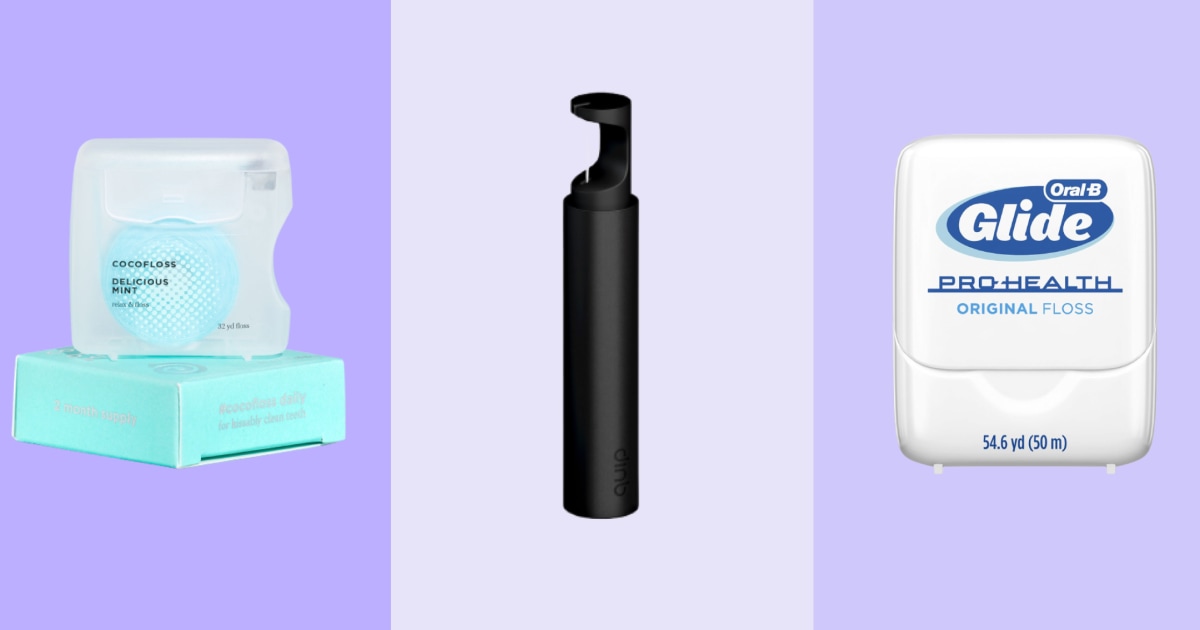
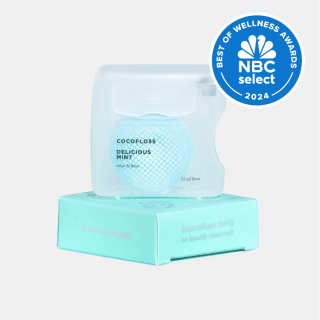

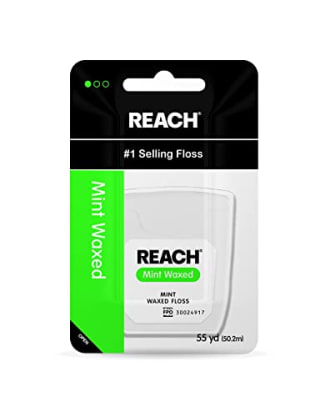
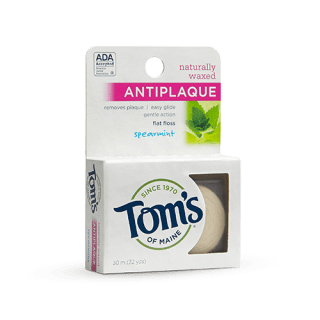


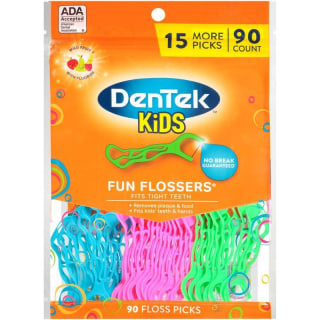
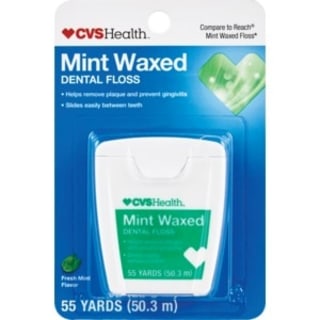

Leave a Reply